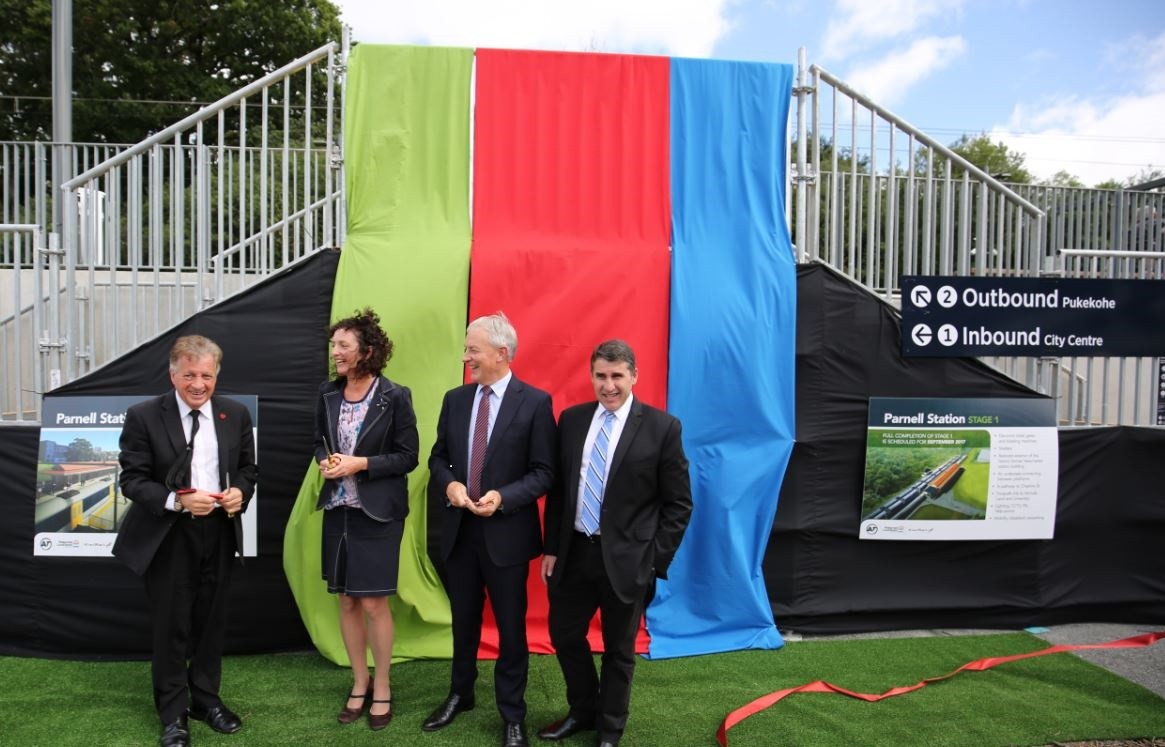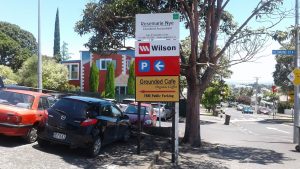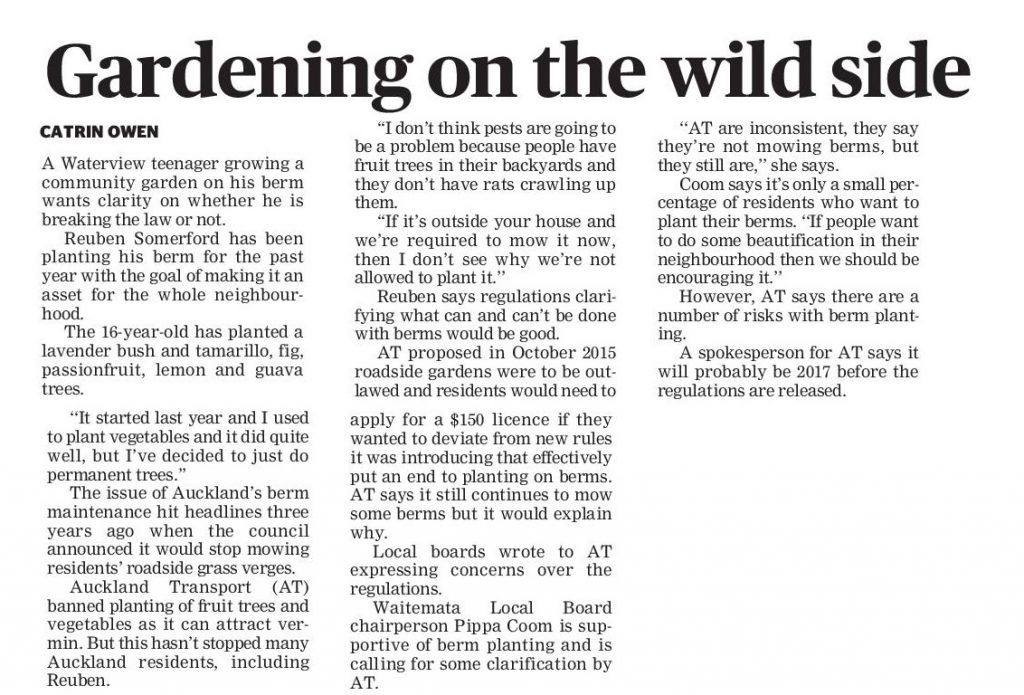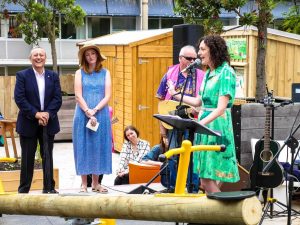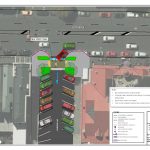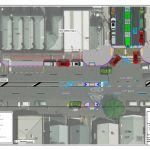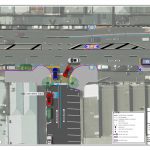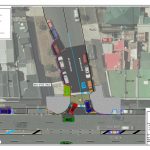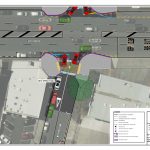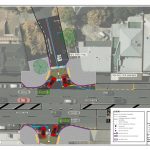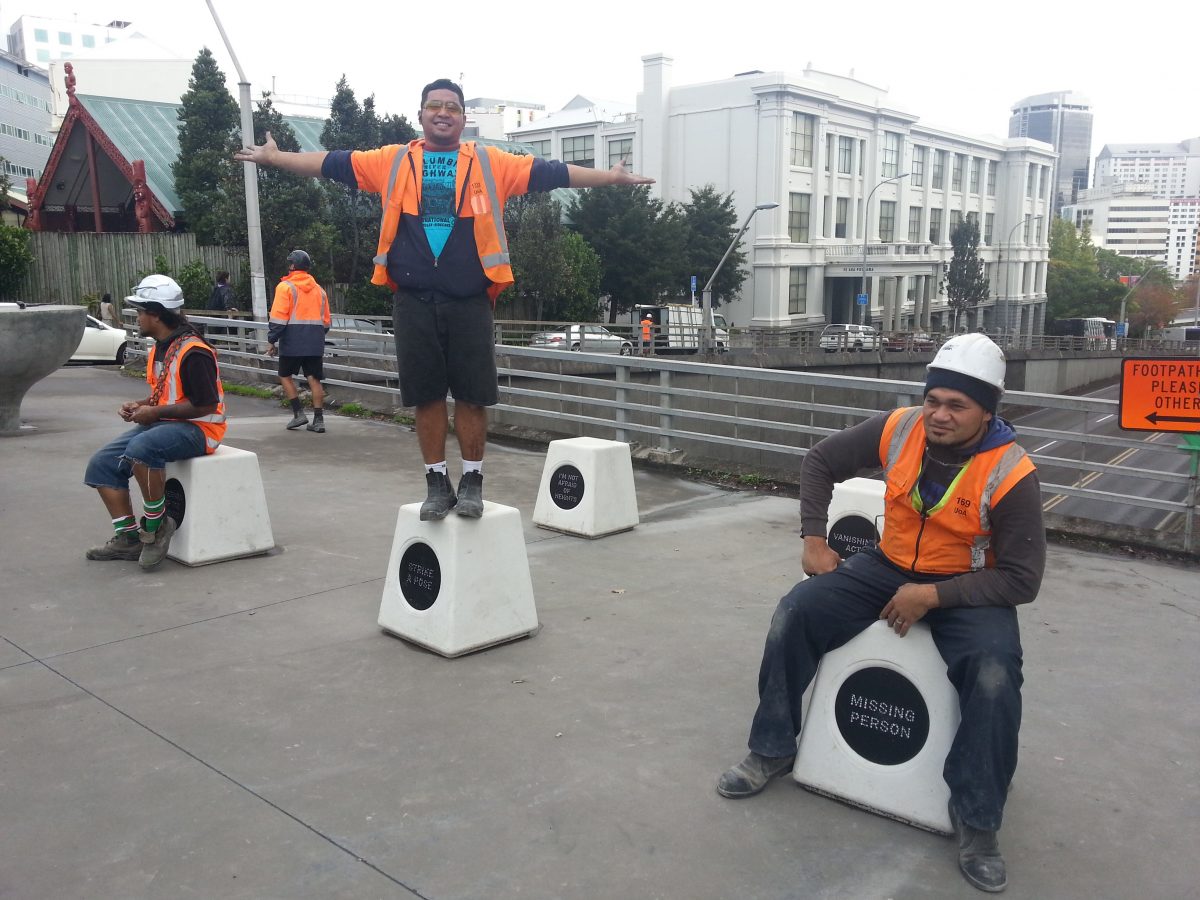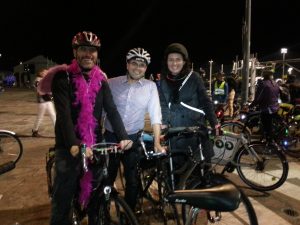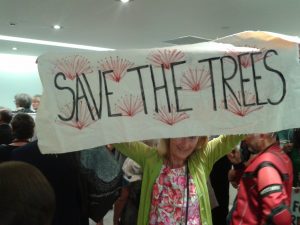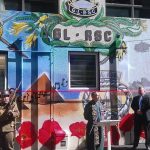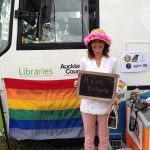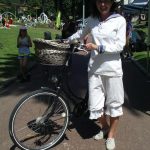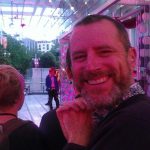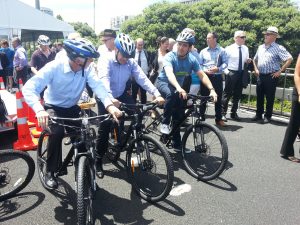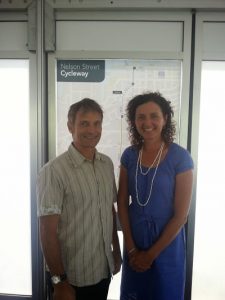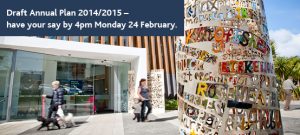This is my final report for the second triennium of Auckland Council. It includes my reflections on the last three years and covers my Waitematā Local Board activities from 31 July to 6 September 2016 as Deputy Chair, lead for the Community and Transport portfolios, and Chair of the Grants Committee, and with positions on the Ponsonby Business Association Board and Ponsonby Community Centre Committee and Board liaison for the Parnell Community Centre.
I have provided a report each month this term. My previous reports are available at www.pippacoom.co.nz.
Summary of August highlights
Unitary Plan passed
The Governing Body of Auckland Council passed the Auckland Unitary Plan (UP) on 15 Auckland following a mammoth five-year process to unify all former regional and district council plans into one. I sat in on several days of the decision making to hear the debate and support, with reservations, the passing of a unified planning rulebook for Auckland. The Board, particularly through the work and leadership of our Chair, Shale Chambers has been actively involved right from day one. There is a lot to reflect on with the community about the process and final decisions on the Independent Hearings Panel recommendations.
It is a significant milestone but there are still big question marks over whether the UP achieves affordable housing, heritage protection, density done well and quality design. There is a lot of work to be done to now deliver on the promise and potential of a unified plan that responds appropriately to inevitable future growth and delivers on the Auckland Plan.
Renaming lower Khartoum Place
 Following consultation on the renaming of lower Khartoum Place with a suitable name associated with women’s suffrage, and in recognition of the Women’s Suffrage Centenary Memorial 1893-1993 ‘Women Achieve the Vote’ the Board voted in July to adopt a bi-lingual name. After receiving further information about the suitability of a bi-lingual name and following a meeting between board representatives, Ngati Whatua and National Council of Women the Board held an extraordinary meeting on 30 August to confirm the new name as Te Hā o Hine Place.
Following consultation on the renaming of lower Khartoum Place with a suitable name associated with women’s suffrage, and in recognition of the Women’s Suffrage Centenary Memorial 1893-1993 ‘Women Achieve the Vote’ the Board voted in July to adopt a bi-lingual name. After receiving further information about the suitability of a bi-lingual name and following a meeting between board representatives, Ngati Whatua and National Council of Women the Board held an extraordinary meeting on 30 August to confirm the new name as Te Hā o Hine Place.
I look forward to Suffrage Day on 19 September when we will be celebrating the new name and acknowledging all those who have contributed to the process and the claiming of a small space for women in the city centre.
Auckland Council media release
1 September 2016
Te Hā o Hine Place at home in the city centre
At a special meeting this week, the Waitematā Local Board voted to change the name of the lower section of Khartoum Place, to acknowledge the location of the Women’s Suffrage Centenary Memorial 1893-1993, ‘Women Achieve the Vote’.
On Suffrage Day 2016, September 19, Waitematā Local Board and iwi partners will unveil the new name for the lower section of Khartoum Place; Te Hā o Hine Place, in recognition of the struggle New Zealand Suffragists faced until 1893.
Ngāti Whātua Ōrākei gifted the name ‘Te Hā o Hine’ which is derived from the whakatauki (proverb) ‘Me aro koe ki te Hā o Hine-ahu-one’ and translates to ‘pay heed to the dignity of women’. The board felt it was a fitting sentiment as did National Council of Women – Auckland Branch.
Carol Beaumont, President of the National Council of Women – Auckland Branch, says they are pleased that the name Khartoum Place is being replaced with Te Hā o Hine Place, as it is more fitting to the Suffrage Memorial.
Since opening a refreshed Khartoum Place in September 2014, the Waitematā Local Board began looking more seriously at changing the name of the lower section, an area that was being informally referred to as “Suffrage Place” due to the location next to the Suffrage Memorial and the space being used for annual Women’s Day and Suffrage Day events.
In April 2016 the local board consulted with iwi, the National Council of Women, local businesses, residents and the wider public to ascertain the level of support for a name change and a preference should they support a change. The majority of submitters supported a name change and for the options for consideration to include; Te Hā o Hine, Suffrage Place and Kate Sheppard Place.
Ellen Melville Centre and Freyberg Place upgrade underway
The creation of a community hub for the growing number of city centre residents got closer with the start of the work to renovate and refurbish Ellen Melville Hall.
This is one of the Board’s most significant projects that we initiated last term. Once completed, the new centre will provide a range of facilities including a new kitchen, Wi-Fi, improved amenities, café-style seating and a modern refurbishment. It will be a much needed community facility for Auckland’s growing city centre residential population.
The $10.7m project includes the upgrade of Freyberg Place (funded by the City Centre targeted rate). The upgrades to Freyberg Place and Ellen Melville Centre are expected to be completed by mid-2017.
Hakanoa Street footpaths and kerbing
 Auckland Transport’s renewal of kerbing and footpaths on Hakanoa Street has been an on-going saga. In August I attended several meetings with residents to resolve the issues related to the removal of bluestone kerbing (replaced in unacceptably large areas with faux concrete kerbing) and poor workmanship including new footpaths on the northern side that led to flooding. The photo right shows residents inspecting a trial of concrete to mimic bluestone (once complete only the area between the cones will be in concrete)
Auckland Transport’s renewal of kerbing and footpaths on Hakanoa Street has been an on-going saga. In August I attended several meetings with residents to resolve the issues related to the removal of bluestone kerbing (replaced in unacceptably large areas with faux concrete kerbing) and poor workmanship including new footpaths on the northern side that led to flooding. The photo right shows residents inspecting a trial of concrete to mimic bluestone (once complete only the area between the cones will be in concrete)
In the latest update to be communicated to all residents Auckland Transport has confirmed that the areas where faux bluestone are to be constructed in concrete are being marked in white paint once each tree site has been investigated to determine the extent where real bluestone kerbs can be installed. AT has committed to re-instating as much bluestone as possible. The northern side footpath/vehicle crossing levels will be remediated to ensure road reserve stormwater is contained.
Auckland Transport’s approach to this renewal has highlighted the need to provide the local board with plans and consult with residents in advance. I am also following up on the need for a longer term tree management strategy.
 Weona Westmere Walkway community planting day
Weona Westmere Walkway community planting day
The project to complete a 1.4km long coastal walkway on council reserve land and the coastal marine area in Westmere got underway last term after years of community campaigning.
It was great to take part in a community planting day to see how far the walkway has progressed around a beautiful but neglected stretch of coastline. Hopefully the walkway will be open by the end of September for everyone to enjoy.
Portfolios
Transport
 I’ve worked on the transport portfolio with Christopher Dempsey over the last six years. It has been exciting to see the positive progress being made to improve transport choices in Auckland. Over the last three years the board has achieved or played a role in achieving for transport:
I’ve worked on the transport portfolio with Christopher Dempsey over the last six years. It has been exciting to see the positive progress being made to improve transport choices in Auckland. Over the last three years the board has achieved or played a role in achieving for transport:
- Start of the City Rail Link (a legacy Mayor Brown can be very proud about)
- Funded a Parnell Station connection to Nicholls Lane to support opening of the station
- Progress on the Harbour Bridge pathway SkyPath
- Increased funding for cycleways that has led to the completion of the Te ara i whiti /Lightpath, Nelson St cycleway, Quay St cycleway, Westhaven promenade and a central programme of cycleways
- Progressed the Grey Lynn Greenways route
- Worked with Auckland Transport on the Ponsonby Road pedestrian experience project
- Secured the upgrade of Franklin Road with undergrounding of power lines, stormwater separation, new footpaths, road surfacing, pedestrian crossing and cycle lanes
- Implementation of the Freemans Bay Residential Parking Zone (now scheduled for 2 October) and parking zones in all central city suburbs
- Successfully advocated for improved pedestrian safety such as walking improvements at the Grey Lynn shops and in the city centre.
- Ensured Auckland Transport leveraged maintenance budgets to provide safety improvements for all road users such cycle feeder lanes and stop boxes on Ponsonby Road as part of a resurfacing project
- Successfully advocated for the removal of parking minimums from the Unitary Plan
- Advocated for improved local bus services as part of the New Network to be rolled out in 2017
- Successfully advocated for the inclusion of a new outcome in the City Centre Masterplan: A walkable and pedestrian- friendly city centre, moving towards zero pedestrian deaths or serious injuries as a result of vehicle collisions.
- Initiated a street tree planting policy and identified locations for new street trees (including three new tree pits on Williamson Ave as part of the Countdown development)
- Installed three on street drinking stations
We’ve also provided input into a range of Regional transport policies.
There is still a lot to be done to reduce congestion and carbon emissions, and provide safe, connected, accessible transport choices in Waitematā. Next term I hope to progress: slower speeds in the city centre and on residential streets, implementation of vision zero, opening up of greenways routes (including opening up the old Parnell Rail tunnel), changes to the give way rule, roll out of improved wayfinding, acceleration of the cycleways programme and residential parking schemes, driver education regarding vulnerable road users, ending dangerous car transporter practices on Great North Road and further work to improve the walking experience in Waitemata.
Community
 As portfolio holder with Deborah Yates, we cover community facilities, libraries and initiatives aimed at building community wellbeing capacity, leadership and skills. Some of what has been achieved for the community over the last three years includes:
As portfolio holder with Deborah Yates, we cover community facilities, libraries and initiatives aimed at building community wellbeing capacity, leadership and skills. Some of what has been achieved for the community over the last three years includes:
- Increased community funding to $125,000 per year for grants to community and sports groups (distributing funds through the Community Grants Committee)
- Established an accommodation grant fund
- Funded the Inner City Network and Inner City Neighbours Day event
- In January 2015 registered the Waitematā Local Board with UNICEF as the first local board to be working toward “child friendly” accreditation.
- Funded Child Friendly Cities initiatives such as Think Big – the creation of a consultation website for children
- Supported a Community-led design process for the development 254 Ponsonby Road with open space
- Provided funding support for Kelmarna Gardens and a community garden coordinator
- Extended library hours
- Continued to implement the Accessibility Plan and undertaken a review
- Agreed funding and work programmes for our three community centres.
- Provided additional funding to support growing participation at the Grey Lynn Community Centre
- Provided support to the Waitematā Youth Collective involvement in events, activities, steering groups and projects
One of the areas of ongoing concern has been the increasing numbers of rough sleepers in the city centre. We have supported the Homelessness Action Plan initiatives currently underway but going into next term a great deal of further work is needed to make an impact.
There is also more to do to develop partnership approaches with mana whenua, improve the health of our communities such as extended smoke free areas, improve safety and increase engagement and participation especially by inner city residents.
I am sad that both of my co-portfolio holders Deborah Yates and Christopher Dempsey have decided to retire from local government. They have made a huge contribution and I have really appreciated working with them.
In the online version of my report at pippacoom.co.nz I have included photos of Deborah and Christopher in action. Photos of board members are not allowed in reports during the election period (There will of course be a photo of me and Christopher on our bikes – the most enjoyable and fun way to get around Waitematā as a board member!)
Waitematā Local Board 2013 – 2016
 It has been a privilege to serve on the Waitematā Local Board for two terms as Deputy Chair. After the hard work in the first term to make the new super city structure work effectively for local decision making, I was grateful to be elected for a second time to continue the many projects underway with an ongoing commitment by the Board to strong community engagement.
It has been a privilege to serve on the Waitematā Local Board for two terms as Deputy Chair. After the hard work in the first term to make the new super city structure work effectively for local decision making, I was grateful to be elected for a second time to continue the many projects underway with an ongoing commitment by the Board to strong community engagement.
There is still a lot to do to ensure Council is listening and responsive to local aspirations and that the governance framework is fit for purpose. There are parts of the organisational structure and culture that still need further refinement to properly support the role of local boards. The Auckland Transport relationship with local  boards is particularly problematic and only a complete overhaul of the leadership is likely to result in any meaningful improvement.
boards is particularly problematic and only a complete overhaul of the leadership is likely to result in any meaningful improvement.
This term has been immensely rewarding and at times lots of fun too. The Board’s annual achievements reports available on the Council website highlight just how much has happened over the term (Link to the 2015/2016 Achievement Report). We are fortunate to be supported by an outstanding, hardworking local board team.
The rewards are great for board members able to put the time into the role. I’ve appreciated the many learning opportunities and the amazing speakers that take part in the Auckland Conversations series. It has also been an opportunity to meet a wonderfully diverse range of people, to get involved with our many community groups (particularly through our community grant funding) and to take part in the many events on offer in the Waitematā area.
There is still much to do. I hope to be part of a progressive Local Board next term that will continue to deliver for everyone who lives, works, plays and visits Waitematā.
Workshops and meetings
From 31 July until 6 September 2016 I attended:
- Local Board Members briefing on greenways identity on 1 August
- Hakanoa road works meeting with local residents on 1 August
- Waitematā Local Board workshop on 2 August
- Independent Hearings Panel recommendations: Briefing session for local board members
- Meeting to discuss renaming of Khartoum Place with Ngati Whatua Orakei, National Council for Woman and representatives of the Waitematā Local Board.
- Community Portfolio additional meeting – Grey Lynn Community Centre funding increase
- Waitematā Local Board business meeting on 9 August at the Grey Lynn Community Centre
- Meeting to discuss a proposal for an Inner City Community Garden on Griffith Building Site (temporary site as a result of the CRL works on the corner of Albert Street and Wellesley Street)
- Waitematā Local Board workshop on 11 August
- Attended the Unitary Plan debate at the Governing Body meetings on 11 and 12 August
- Meeting with GLBA and Auckland Transport to discuss parking impacts of Richmond Road cyclelane project
- Workshop on 15 August on opportunities for Community-led development support and development with Ākina and Inspiring Communities (at the invitation of Denise Bijoux )
- Waitematā Local Board workshop on 16 August
- Monthly Transport portfolio catch up on 17 August
- Franklin Road Improvement Project Community Liaison Group Meeting on 17 August
- Hakanoa St Trial Mimic Kerb Inspection on 22 August (see details above)
- CRL update for Waitemata and Albert Eden Boards Chairs and portfolio holders on 22 August
- Meeting to discuss Greenways branding on 23 August
- Waitematā Local Board workshop on 23 August
- Communications update on 23 August
- Meeting on 23 August of the community portfolio and inner city residents to discuss action on homelessness and use of the Civic Administration building as a night shelter
- Meeting to discuss the Board’s feedback on the Maori Language Policy and implementation plan
- Community portfolio meeting on 24 August
- Inner City Network meeting and lunch hosted by Splice on 25 August. Presentation: social impact of intensification of housing
- Ponsonby Community Centre committee meeting on 29 August
- Waitematā Local Board workshop on 30 August
- Waitemata Local Board Extraordinary Meeting for Renaming of Khartoum Place on 30 August
- Meeting with Hakanoa residents at the Grey Lynn Community Centre on 31 August to discuss kerb and channel work
- Meeting on 31 August of the Elected Member Political Advisory Group to discuss induction planned for new term
- Waitematā Local Board workshop on 6 September
- Newmarket Laneways meeting: feedback from Public Consultation and approval of Final Concept Design
- Ponsonby Business Association committee meeting on 8 September
Events and functions
From 31 July until 9 September I attended:
 Opening the Club House – West End Lawn Tennis Club on Sunday 31 July (photo right)
Opening the Club House – West End Lawn Tennis Club on Sunday 31 July (photo right)- Backbenchers Auckland edition at the Britomart Social Club on 3 August
- First Thursdays on K’rd on 4 August
- Wynyard Quarter 5th birthday on 6 August
- Grey Lynn Business Association networking drinks at Storage King on 10 August
- Blessing for the start of works at the Ellen Mellville Centre and Freyberg Square
- OperaNesia on O’Connell Street on 11 August
- Opening of the new Grey Lynn Fire Station on Williamson Ave on 12 August
- Volunteer planting day on the Weona Walkway, Westmere
- Franklin Road Community BBQ hosted by Auckland Transport for the start of works on 14 August
- Venus in Fur at the Herald Theatre at the invitation of the Auckland Theatre Company
 Dedication and official opening of the Bishop Selwyn Chapel on 21 August (photo right)
Dedication and official opening of the Bishop Selwyn Chapel on 21 August (photo right)- K’rd presents catwalk show at NZ Fashion Week at the invitation of the K’rd Business Association on 23 August
- St Columba’s fundraising Potter’s market on 29 August
- Campaign for Better Transport’s Rail to the Airport public meeting in Onehunga on 30 August
- Bike Breakfast at Scarecrow on 1 September
- Random Act of Kindness Day hosted by Splice
- Rod Oram’s book launch at AUT: Three Cities – Seeking Hope in the Anthropocene
- Living Wage Assembly at St Matthews for Mayor candidates and Waitematā & Gulf Ward Candidates
- Q Theatre 5th Birthday celebration at the invitation of Q Theatre on 2 September
- Merchant Navy remembrance service at the Maritime Museum on 3 September
- Fukuoka Day at the Town Hall on 3 September
- LATE at the Museum from #Slackivism to Activism panel discussion on 5 September
- Boys will be Boys at Q Theatre on 9 September at the invitation of Silo Theatre

 I would first like to acknowledge this place. Parnell station is located in the historic Waipapa valley , a site of significance to mana whenua back into time and the early settlers of Auckland who coveted the strategic location and pure waters of Waipapa Stream.
I would first like to acknowledge this place. Parnell station is located in the historic Waipapa valley , a site of significance to mana whenua back into time and the early settlers of Auckland who coveted the strategic location and pure waters of Waipapa Stream. I know there is a long roll call of people who played a role – let me acknowledge former Auckland City Councillors Richard Simpson (attending today all the way from Brisbane), Christine Caughey (well ahead of their colleagues at the time in valuing public transport over motorway building madness); members of Parnell Heritage, Parnell Community Committee Luke Niue, Jennie Goulding, Mary Barry, Rendell Macintosh, Roger Cole-Bake; Debbie Harkness former Parnell Mainstreet Manager was a strong supporter back in 2008, and more recently Cheryl Adamson and the Parnell Business association all who have helped keep the focus on Parnell as a destination.
I know there is a long roll call of people who played a role – let me acknowledge former Auckland City Councillors Richard Simpson (attending today all the way from Brisbane), Christine Caughey (well ahead of their colleagues at the time in valuing public transport over motorway building madness); members of Parnell Heritage, Parnell Community Committee Luke Niue, Jennie Goulding, Mary Barry, Rendell Macintosh, Roger Cole-Bake; Debbie Harkness former Parnell Mainstreet Manager was a strong supporter back in 2008, and more recently Cheryl Adamson and the Parnell Business association all who have helped keep the focus on Parnell as a destination.
